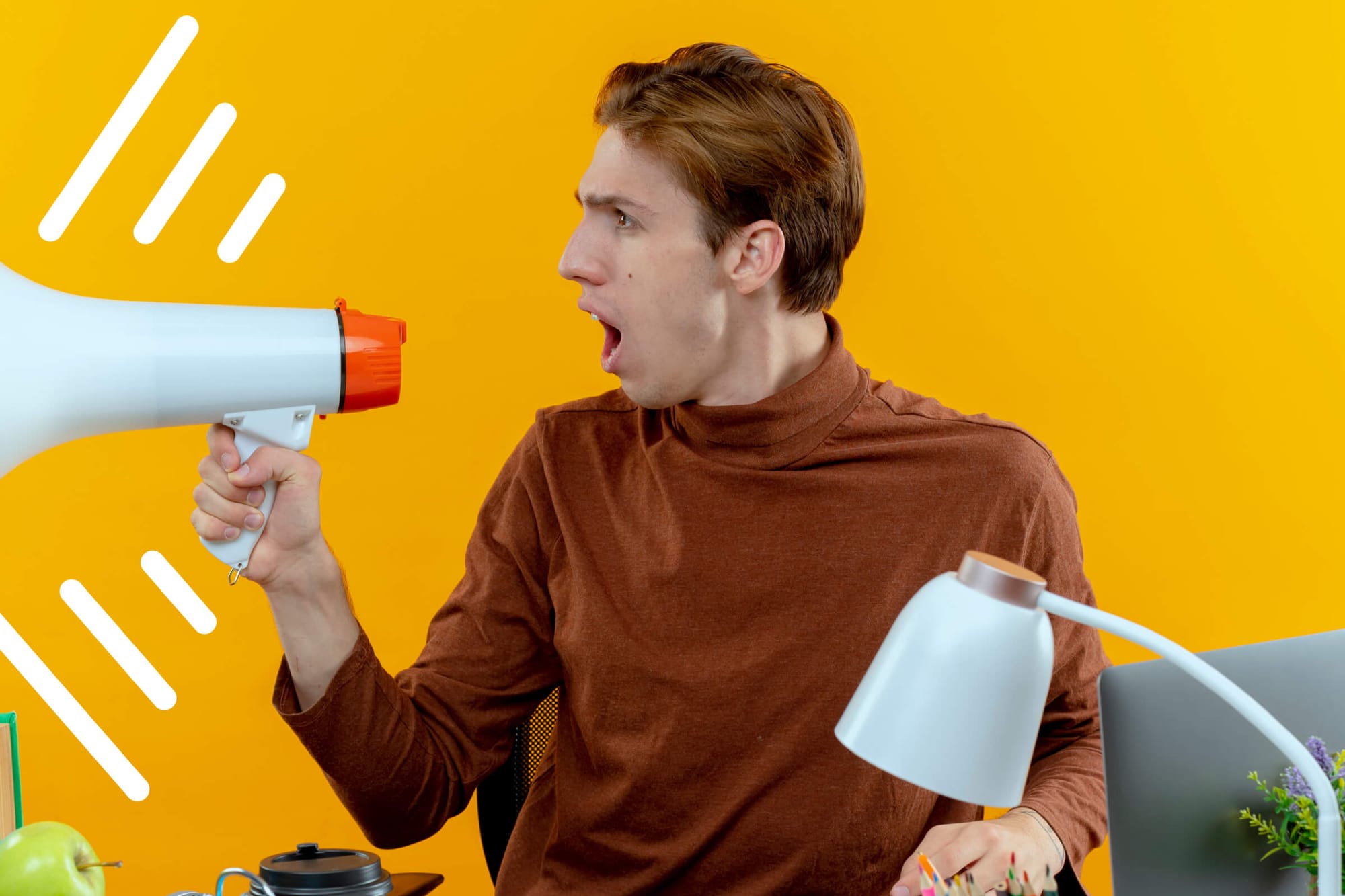What Brands Can Steal from Creators to Win on Social
Brands don’t need bigger budgets, they need creator instincts. Discover how to think, talk, and move like creators to stay relevant in 2025.
Table of contents

In 2025, creators aren’t just driving culture, they are the culture.
The way people talk, dress, edit, and even consume content now comes straight from the creative class: streamers, YouTubers, podcasters, and TikTok storytellers who learned to build attention without million-dollar budgets or 10-person marketing teams.
Meanwhile, brands, even big ones, are struggling to keep up. Traditional social campaigns feel overproduced, too polished, and too late to the party.
But here’s the plot twist: the blueprint brands are searching for has already been written. It’s sitting in every creator’s workflow.
Creators have mastered what corporations are still learning how to build emotional gravity online.
So, if you’re a marketer, founder, or creative strategist wondering how to make your brand feel relevant again, here’s the good news: you don’t have to reinvent the wheel. You just need to steal from creators ethically.
Let’s break down what brands can learn from the creator playbook, why it works, and how to apply it without losing your own identity.
The Creator Economy Outpaced the Marketing Industry (and Why That’s Not a Threat)
Five years ago, creators were treated like add-ons the “influencers” brands hired to make an ad look authentic. Today, creators are the engine.
TikTok, YouTube Shorts, and Instagram Reels turned creators into agile media companies with better storytelling instincts than most agencies. They know how to pivot instantly, speak natively, and make algorithms fall in love with their content.
The New Rules of Relevance
Let’s be clear: the social landscape in 2025 is brutally fast. Trends cycle in hours, not weeks. AI tools make editing easier but originality harder. And audiences younger, smarter, and more skeptical can smell corporate copy from a mile away.
That’s why creators win. They don’t try to look perfect; they try to look real. Their posts sound like a friend’s message, not a brand announcement. Their visuals are shot on phones, not studio rigs. Their edits move fast, their captions feel human, and their communities respond instantly.
Here’s what creators figured out long before most brands caught on:
Authenticity is no longer a strategy. It’s a format.
People don’t trust polish anymore; they trust personality.
And while most brands are still chasing virality, creators are quietly building relationship equity, the kind of connection that actually converts.

Creator Lessons Brands Need to Steal (and How to Apply Them)
1. Ditch the Corporate Voice, Speak Like a Human
Creators don’t write copy; they write conversation.
If you scroll through their captions, you’ll notice they’re rarely longer than two sentences. But every word sounds like them. There’s rhythm, tone, humor, and even imperfection, the kind that makes you stop scrolling because it feels like someone’s talking, not selling.
Here’s how brands can replicate that:
- Write like you’d text your best customer.
- Drop jargon and marketing buzzwords.
- Use contractions and real speech patterns. (“We’re,” “you’ll,” “that’s crazy,” etc.)
- Respond in comments like a person, not a press release.
Example:
- ❌ “Our new product has arrived! Experience innovation redefined.”
- ✅ “It’s here. And yeah, it’s kind of a game-changer.”
Small language shifts make huge perception differences.
The psychology behind it is simple: people want mirrors, not megaphones. The closer your tone feels to your audience’s own voice, the stronger your brand’s magnetism becomes.
2. Speed > Perfection
Creators don’t wait for approvals; they move. They post ideas at the speed of thought, iterate based on feedback, and win through volume and velocity.
Brands, on the other hand, often drown in process: decks, revisions, sign-offs, and timing windows that miss the moment entirely.
In 2025, speed is strategy.
Audiences don’t reward perfection; they reward participation. You don’t need to be the first to a trend, you just need to be fast enough that it still feels alive.
What to steal:
- Build a “rapid content unit” inside your social team. Small, nimble, and empowered to ship in 24-48 hours.
- Loosen sign-off chains for low-risk formats (like memes or commentary posts).
- Use data in real time, not reports in hindsight.
The best performing brand TikToks last year? Not the polished campaigns but the unplanned reactions. Duets, stitches, replies, and re-shares.
That’s creator logic in action: conversation beats curation.
3. Show the Process, Not Just the Product
One of the most powerful creator tactics is radical transparency showing how things get made.
Audiences love behind-the-scenes content because it builds trust. When they see your effort, they respect your outcome.
Creators do this naturally. They show editing timelines, script notes, failed takes, or studio setups. It humanizes them and deepens connection.
Brands can do this too.
Instead of just posting “new collection out now,” show how it came to life:
- Moodboards
- Design sketches
- Brainstorm footage
- Team reactions to first samples
When people feel included in the process, they don’t just buy the product they belong to.
The formula is simple:
Behind-the-scenes = buy-in.
4. Collaborate Horizontally, Not Hierarchically
Creators partner across, not up. They build networks with people at their same level and grow together.
Meanwhile, many brands still chase celebrity endorsements instead of cultivating real creative collaborations.
In 2025, community-led marketing beats influencer-led marketing every time.
Work with micro-creators who actually love your product. Invite them to shape campaigns, not just promote them. Give them creative control.
That’s how you earn credibility by letting creators leave fingerprints on your content, not just their faces.
It’s what made Duolingo’s chaotic TikTok presence explode. The mascot doesn’t sell language lessons; it collaborates with chaos itself. That’s creator energy fearless, funny, and unapologetically weird.
5. Build a Face, Even If You’re a Brand
Every creator has a face, a literal human presence that becomes the emotional core of their content.
Brands, however, tend to hide behind logos.
That doesn’t work anymore. Algorithms prioritize faces. AI-generated thumbnails, shorts, and clips with visible humans perform 40–70% better than faceless ones.
So, even if you’re a business, assign a face to your brand.
- Your founder.
- A charismatic employee.
- A recurring content host.
- Even an animated avatar with a voice.
The audience wants to know who’s talking to them.
Think of it this way: a logo builds recognition. A face builds relationships.
6. Music Isn’t Background, It’s Emotion
Here’s something both creators and brands often underestimate: sound is 50% of storytelling.
Creators treat background music as emotional architecture, a rhythm that guides how viewers feel.
But brands? They often treat it as filler.
That’s a mistake.
The right soundtrack doesn’t just decorate your video; it defines its energy. A cinematic underscore turns a product demo into a mini-movie. A nostalgic guitar loop turns a testimonial into a memory. A glitchy electronic beat can make your tech reel feel futuristic.
The smartest brands in 2025 are starting to act like creators using royalty-free music platforms like ProTunes One to curate sonic identity.
Why it works:
- Every ProTunes One track comes with global commercial rights and no copyright worries.
- You can search by mood, instrument, or even visual vibe.
- You can download stems and underscore versions to fine-tune emotion.
Creators already know: the right music can double engagement. Brands are just now catching up.
Don’t sound like an ad. Sounds like a story.
7. Storytelling > Selling
Creators don’t pitch; they narrate.
A vlogger doesn’t “promote” a product they experience it. A streamer doesn’t “showcase features” they react to them. A YouTuber doesn’t “announce” a release; they unbox it live, in front of real reactions.
The power is in the framing.
Brands that win on social media now understand that emotion drives conversion. The formula:
Story → Emotion → Memory → Sale.
Tell stories that reflect your customer’s journey, not your sales funnel. Example: instead of “Introducing our new running shoe,” show “A runner who hasn’t missed a sunrise in 300 days finally finds a pair that lasts.”
Creators tell those stories naturally. It’s time brands did too.
8. Lean Into Imperfection
One of the biggest shifts creators taught us is that polish doesn’t equal performance.
Blurry, handheld, unfiltered videos often outperform highly produced ads because they feel real.
When something’s too perfect, it feels distant. When it’s slightly raw, it feels relatable.
So let the bloopers live. Keep the laughter. Show the hiccups. You’re not lowering quality, you're raising authenticity.
Audiences want to see your humanity, not your highlight reel.
The Creator Mindset: What Brands Really Need to Borrow
At its core, the difference between brands and creators isn’t budget, it's belief.
Creators believe in experimentation, not perfection. They see feedback as iteration, not criticism. They play the long game: trust > reach, community > clicks, relationships > impressions.
That’s the mindset brands need to steal.
The Three Golden Rules of Creator Thinking
- Build for Depth, Not Breadth It’s better to have 10,000 people who genuinely care than 100,000 who don’t.
- Be the Platform, Not Just a Profile Creating content that lives beyond one campaign makes your social channels useful. Tutorials, humor, education, inspiration. Give value before asking for attention.
- Collaborate Like a Creator Bring in videographers, editors, or influencers early. Make them co-authors, not hired hands. Shared ownership drives better storytelling.
When you think like a creator, you stop chasing trends and start creating culture.
Where the Two Worlds Meet
The smartest brands in 2025 blur the line between brand and creator. They build content studios in-house. They hire social storytellers, not just social managers. They run campaigns that feel like content and content that feels like community.
That’s not coincidence, that's evolution.
Consumers don’t separate “brand content” from “creator content” anymore. They only separate good stories from boring ones.
And right now, creators are writing all the good ones.
The Soundtrack of Modern Storytelling
Creators understood something instinctively: your visuals grab attention, but your sound keeps it.
Brands are finally catching on.
A campaign without sonic identity feels hollow. But pair your visual identity with a recognizable sound, the same genre, the same vibe, the same emotional frequency and suddenly, people remember you.
That’s why platforms like ProTunes One are quietly powering the next generation of brand storytelling. With AI-driven search, you can describe your vibe (“confident,” “hopeful,” “tech-forward,” “nostalgic”) and instantly get music that matches your tone complete with full commercial rights, no licensing headaches.
Your brand deserves to sound as human as it looks.
Final Thoughts - Steal Boldly, But Stay You
The future of social isn’t about creators versus brands. It’s about brands learning to act like creators fast, funny, fearless, and human.
Steal the authenticity. Steal the pace. Steal the emotional intelligence.
But remember: the goal isn’t to imitate, it's to integrate.
Be real. Be responsive. Be rhythmic. And when you tell your story, make sure it sounds like something people want to remember.
That’s where ProTunes One helps. Our royalty-free music platform gives brands and creators alike the same sonic tools to connect authentically cinematic sound, adaptive stems, and global commercial rights that make storytelling easy, legal, and beautifully human.
🎧 Create like a creator. Sound like a brand. Win both ways. Visit ProTunesOne to explore your next soundtrack.






